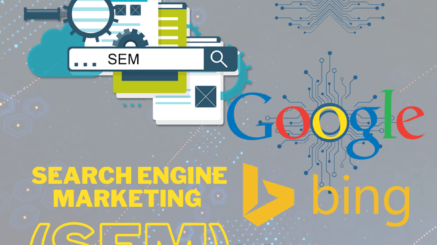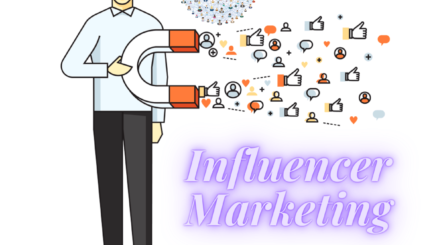“Mastering Paid Advertising in 2023: Unleashing Digital Marketing Potential!”
Introduction
In the modern, rapidly evolving digital era, companies are continuously searching for novel methods to market their goods and services. Paid advertising has arisen as an influential instrument enabling businesses to engage their desired consumers, enhance brand exposure, and generate conversions. As we dive into 2023, understanding the fundamentals of paid advertising and how it works is essential for any business looking to stay competitive and thrive in the online realm.
With this in mind, let’s embark on a journey through the intricacies of paid advertising in 2023, unraveling its secrets and exploring its impact on the digital marketing landscape!
The Evolution of Paid Advertising
Paid advertising has come a long way since its inception. In the early days, traditional channels like television, radio, and print dominated the advertising space. However, with the rise of the internet, a paradigm shift occurred, giving birth to digital marketing and paving the way for new and exciting advertising possibilities.

- The Rise of Digital Advertising:
- With the advent of the internet, digital advertising gained traction, offering businesses a cost-effective means to reach a global audience.
- Online platforms like search engines, social media, and websites became prime real estate for displaying ads.
- Advertisers began utilizing targeted strategies, focusing on specific demographics, interests, and behaviors to maximize their advertising ROI.
- The Mobile Revolution:
- The proliferation of smartphones revolutionized the advertising landscape further.
- Mobile advertising witnessed exponential growth, providing businesses with an opportunity to engage with consumers on the go.
- In-app ads, mobile websites, and location-based targeting emerged as key components of successful mobile advertising campaigns.
How Paid Advertising Works
Paid advertising operates on the principle of displaying targeted ads to users based on various factors, such as their interests, demographics, and online behavior. Here’s a breakdown of how paid advertising works in 2023:
- Campaign Planning and Objective Setting:
- Before launching a paid advertising campaign, businesses must define their goals and objectives.
- Is the objective to drive website traffic, generate leads, increase sales, or boost brand awareness?
- Determining the campaign objective is crucial for designing an effective strategy and measuring success.
- Platform Selection:
- Depending on the target audience and campaign goals, businesses must select the appropriate advertising platforms.
- Search engine advertising, social media advertising, display advertising, and video advertising are popular options.
- Each platform offers unique features and targeting capabilities, enabling advertisers to tailor their campaigns effectively.
- Audience Targeting:
- Effective audience targeting is the backbone of successful paid advertising.
- Advertisers utilize data analytics, user behavior tracking, and AI-powered algorithms to identify and reach their target audience.
- Demographic segmentation, interest-based targeting, and remarketing are commonly employed techniques.
- Ad Creation and Optimization:
- Compelling ad creatives are essential for grabbing users’ attention and driving engagement.
- Advertisers must create visually appealing and persuasive ads that align with their brand identity and resonate with the target audience.
- A/B testing, continuous monitoring, and optimization help refine ad performance and enhance campaign effectiveness.
- Bid Management and Budget Allocation:
- Paid advertising involves bidding for ad placements on platforms like search engines and social media.
- Advertisers set bids based on their desired ad placement and budget limitations.
- Effective bid management and budget allocation ensure optimal ad visibility and cost efficiency.
- Performance Tracking and Analysis:
- Tracking campaign performance is crucial for evaluating the effectiveness of paid advertising efforts.
- Advertisers employ analytics tools to monitor key metrics such as impressions, clicks, conversions, and return on ad spend (ROAS).
- Data-driven insights allow for informed decision-making, optimization, and maximizing advertising ROI.
FAQs about Paid Advertising in 2023
Q1: Is paid advertising only suitable for large businesses?
- Paid advertising is suitable for businesses of all sizes. It offers flexibility in budgeting and allows precise targeting, enabling small businesses to compete effectively.
Q2: How long does it take to see results from paid advertising campaigns?
- The time to see results from paid advertising campaigns varies depending on factors like the industry, target audience, campaign objectives, and optimization efforts. Some campaigns may yield immediate results, while others require longer-term strategies for success.
Q3: Are there any risks associated with paid advertising?
- While paid advertising offers numerous benefits, there are risks involved, such as overspending on ineffective campaigns or failing to reach the intended audience. Proper planning, strategy, and continuous monitoring mitigate these risks.
Conclusion
Paid advertising in 2023 represents a powerful opportunity for businesses to connect with their target audience, drive growth, and achieve marketing success. The evolution of digital marketing has brought forth a wide array of advertising channels and targeting capabilities, providing businesses with unprecedented control over their campaigns.
By understanding the fundamentals of paid advertising and how it works, businesses can leverage its potential to maximize their reach, boost brand awareness, and ultimately drive conversions. In an increasingly competitive digital landscape, embracing paid advertising in 2023 is a necessity for businesses looking to thrive and stand out from the crowd.
So, take the plunge into the world of paid advertising, embrace its possibilities, and propel your business to new heights in 2023 and beyond!



